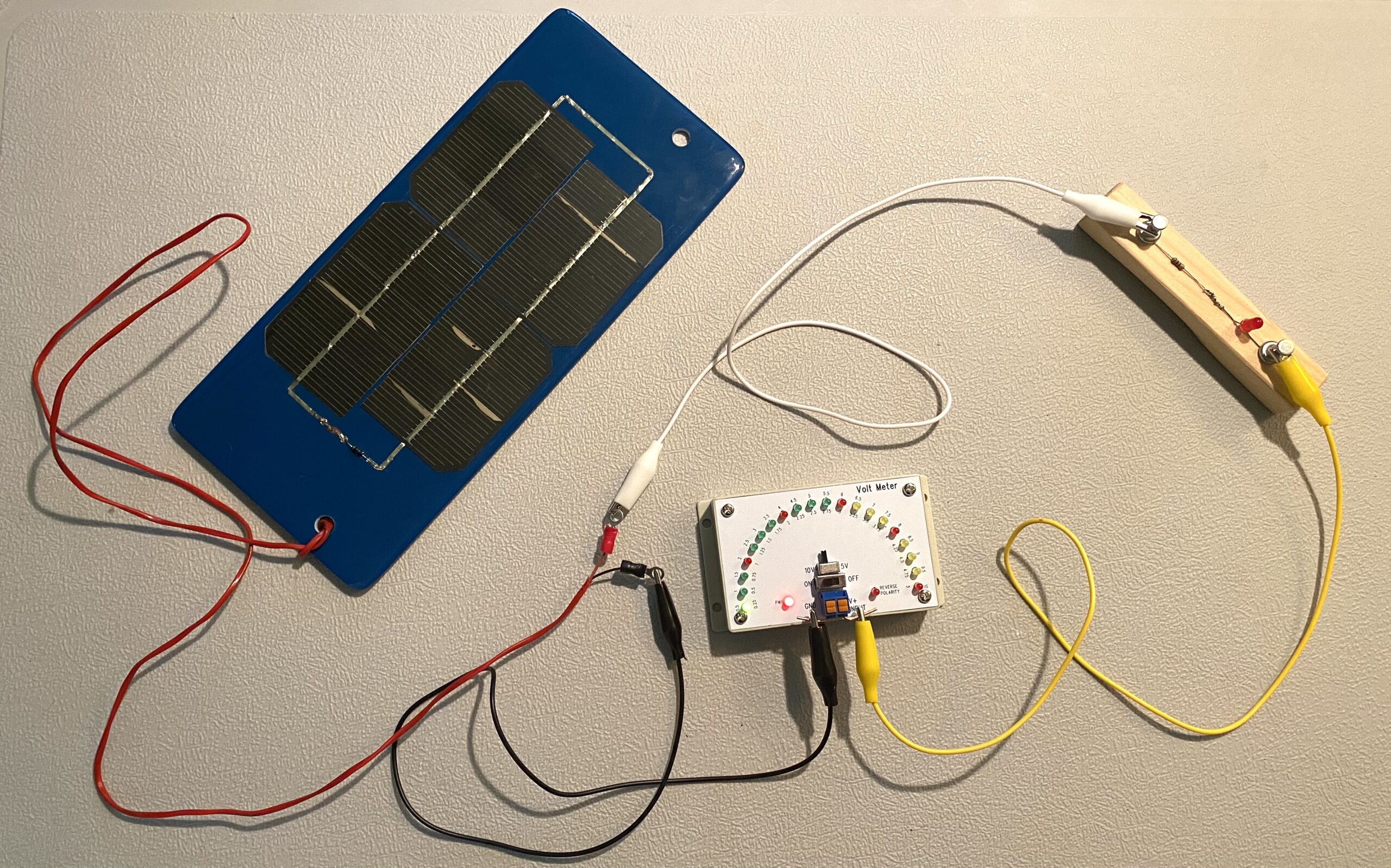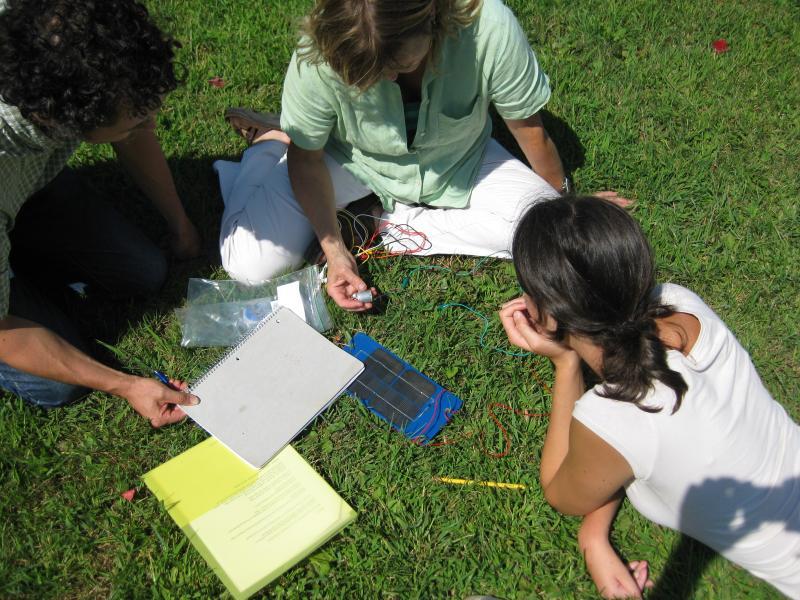$40.00
How does installing photovoltaic panels address the community’s electricity needs while helping to protect the earth?
Description
Turn your students into solar energy experts. The PVs in Action Curriculum helps students:
- experience energy transformations
- grapple with core ideas about energy
- practice employing engineering strategies
- experience how energy can be harnessed in ways that do not negatively impact our environment or our climate.
The PVs in Action curriculum focuses on how photovoltaic panels can be used to transform the sun’s radiant energy into electricity that can then be transformed into a wide variety of useful energy forms (e.g. heat, light, motion, etc.). Students explore electrical circuitry with batteries and bulbs to learn how circuits function before removing the non-renewable battery and replacing it with a PV panel. Students use the PV panels, digital voltmeters, wires, and light sources to explore factors that affect electrical output of PV panels and practice using the engineering design cycle in more advanced ways to improve output. Throughout their work, students generate and analyze data to inform their engineering design choices.
Turn your students into solar energy experts. The PVs in Action materials kit includes everything you need to demonstrate and explore solar power right in the classroom.
High school-aged students also construct through lessons in this guide the molecular-level conceptual models that allow them to describe how a PV panel transforms the radiant energy of photons into flowing electrons.
Grades 4-5: Free download of the curriculum here.
Grades 6-12: Free download of the curriculum here.
WHAT’S IN THE KIT?
Grades 4-5:
Kit includes: 9v PV panels, battery and bulb kits, 500W worklights, digital multimeters, motors, LEDs, 2.2-volt lightbulbs, resistors, static electricity kit, radio, and more.
Kit size: 2 medium totes
Grades 6-12:
Kit includes: PV panels, halogen lights, multi-meters, visual voltmeters, kill-a-watt meters, buzzers, motors, mini light bulbs, alligator clips
Kit size: 2 medium totes
Additional information
| Grade Band | |
|---|---|
| Topic | |
| Type of Material | |
| State |
Standards Addressed
ELEMENTARY NGSS STANDARDS
4-PS3-2 Energy: Make observations to provide evidence that energy can be transferred from place to place by sound, light, heat, and electric currents.
4-PS3-4 Energy: Apply scientific ideas to design, test, and refine a device that converts energy from one form to another.
5-PS1-3 Matter and Its Interactions: Make observations and measurements to identify materials based on their properties.
3-5-ETS1-1 Engineering Design: Define a simple design problem reflecting a need or a want that includes specified criteria for success and constraints on materials, time, or cost.
3-5-ETS1-2 Engineering Design: Generate and compare multiple possible solutions to a problem based on how well each is likely to meet the criteria and constraints of the problem.


